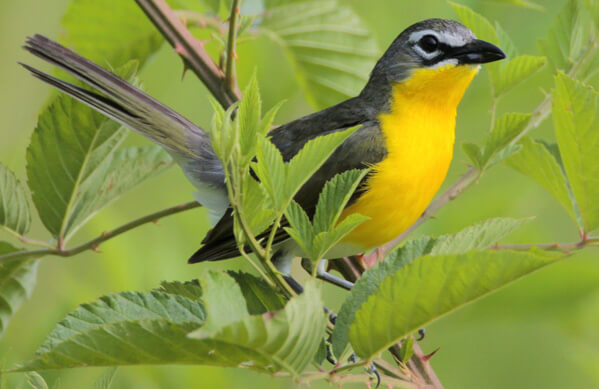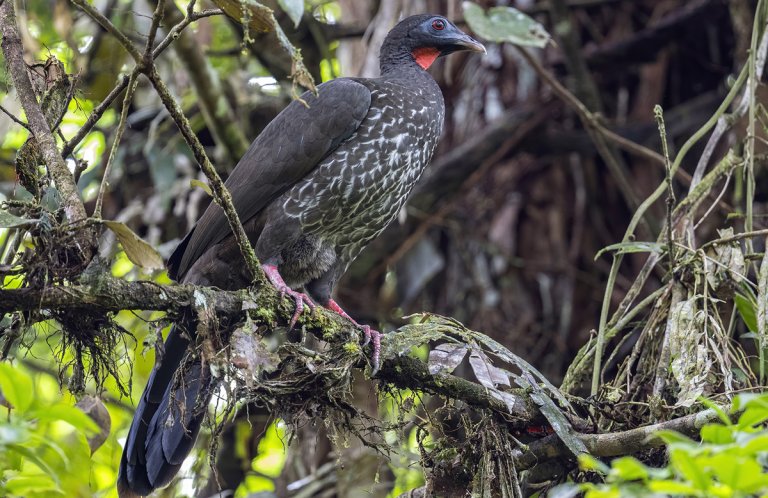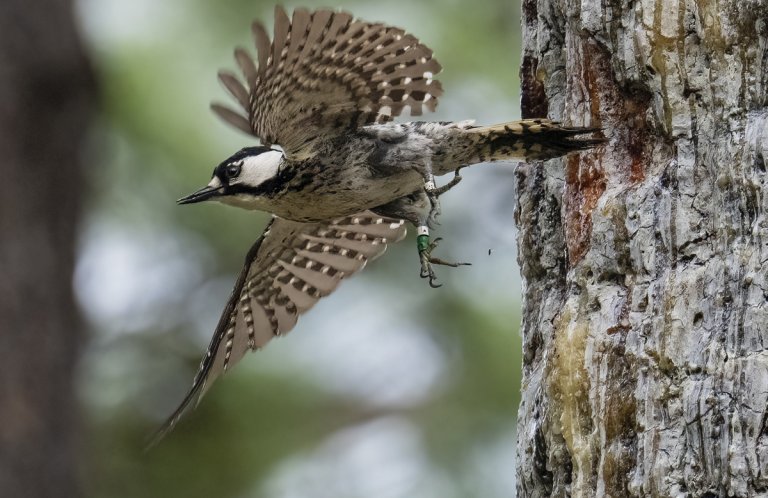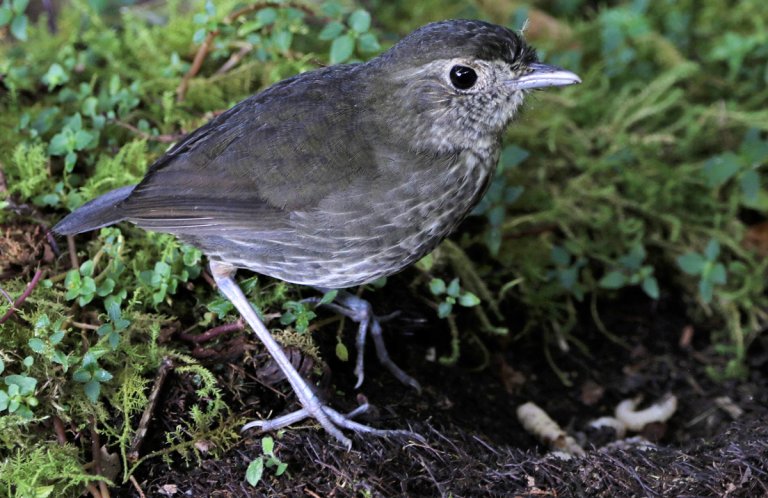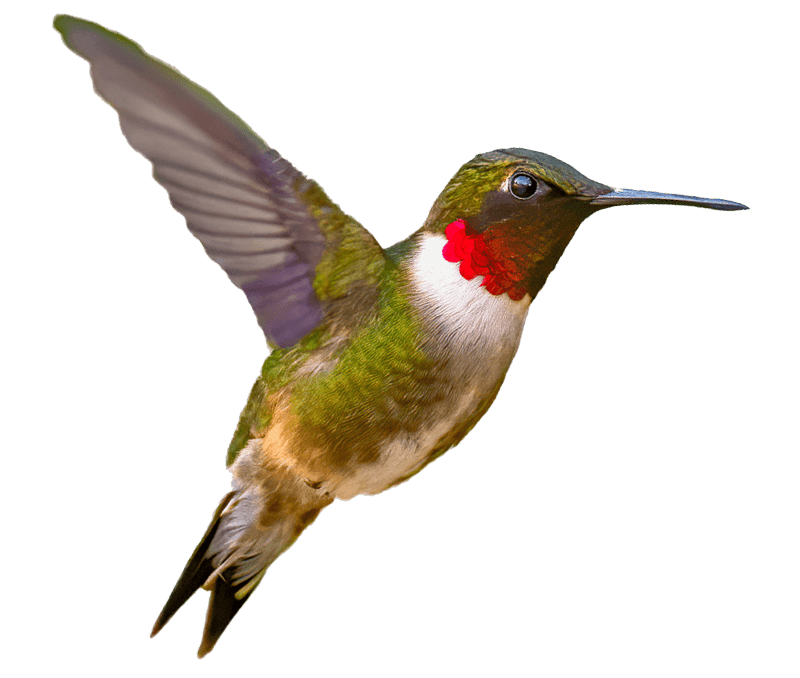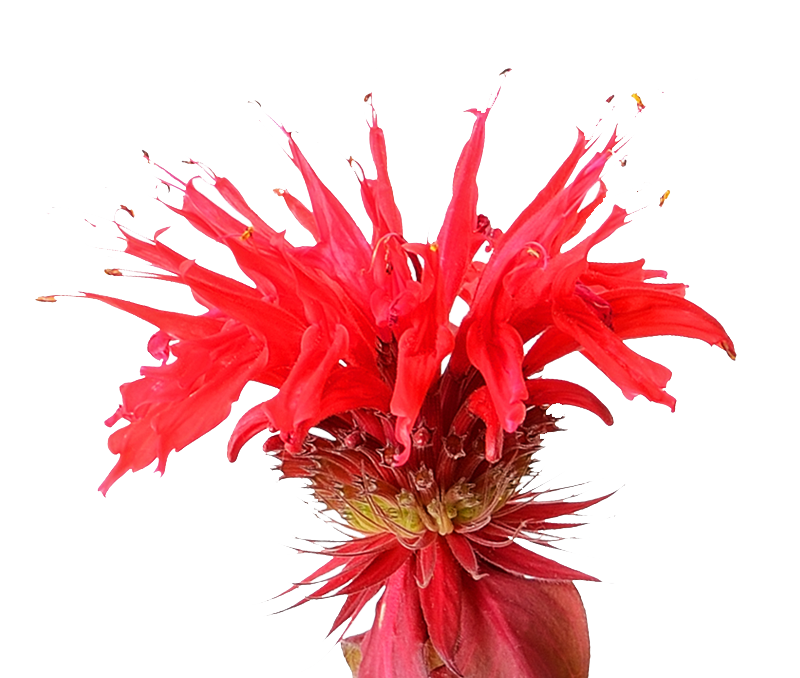
Describing the unique Yellow-breasted Chat, ornithologist Arthur Cleveland Bent observed: "A medley of strange sounds, musical and otherwise, catcalls, whistles, and various bird notes coming from points now here, now there in the bushes will betray the presence of this furtive and elusive clown among birds."
The Yellow-breasted Chat's "song" is a weird and wonderful mix of cackles, clucks, whistles, and hoots. It may mimic other birds' songs and even sings at night. The birds often vocalize from deep inside the densest cover, sometimes sounding as if they are laughing at the frustrated birders trying to locate them. But chats also sing while making conspicuous, bouncy, spread-tailed display flights.
The chat looks like a mishmash of many bird families; its larger size and stout bill resemble a Scarlet Tanager's, while its skulking habits and complex vocalizations seem more like a thrasher's or mockingbird's. Once considered an unusual wood-warbler, the Yellow-breasted Chat is no longer classified as part of the family, Parulidae. In 2017, the American Ornithologists' Union gave this bird its own family, Icteriidae, based on its genetic and physical characteristics.
Where the Chats Are
The Yellow-breasted Chat breeds throughout the eastern United States and winters from Mexico south through Central America. Some overwinter in the southern U.S.
This species is a skulker, favoring low, impenetrable vegetation along forest edges and in riparian areas, powerline cuts, and old fields. These habitat types are also home to birds such as Golden-winged Warbler, Chestnut-sided Warbler, and American Woodcock.
Strong, Silent Feeder
Yellow-breasted Chats eat many types of insects, including ants, bees, wasps, grasshoppers, and beetles. Unusual for a songbird, the chat may grip food items with its large, strong feet as it eats. It also feeds on fruit, particularly blackberries, strawberries, and grapes.
Chats are rarely seen or heard while feeding, preferring to stay deep under cover while searching for food.
Sign up for ABC's eNews to learn how you can help protect birds
Chat Comedy
While establishing a territory in spring, the male Yellow-breasted Chat becomes more conspicuous than usual. First he vocalizes from an exposed perch, often high in a tree; then he launches into an eye-catching display flight, continuing to sing while bouncing through the air with slow, deep wingbeats, head raised, and legs dangling – looking like an oversized, oddball bumblebee.
Although comical to human spectators, these displays help the male chat attract a mate as well as establish territorial boundaries.
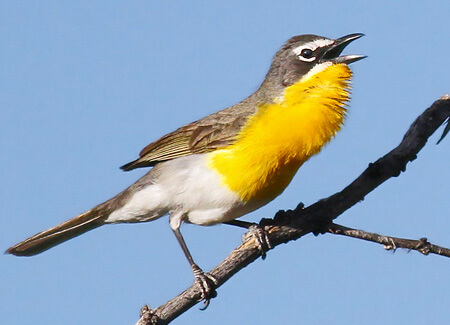
Yellow-breasted Chat singing by Alfred Yan
Home is Where the Habitat Is
Like so many other bird species, Yellow-breasted Chats are threatened by habitat loss. However, the species can benefit from managed forestry efforts by ABC and partners, including the Sustainable Forestry Initiative (SFI), that create and preserve semi-open habitat. Various projects to help the rapidly declining Golden-winged Warbler also create habitat that can be used by Yellow-breasted Chats.
Donate to support ABC's conservation mission!





































